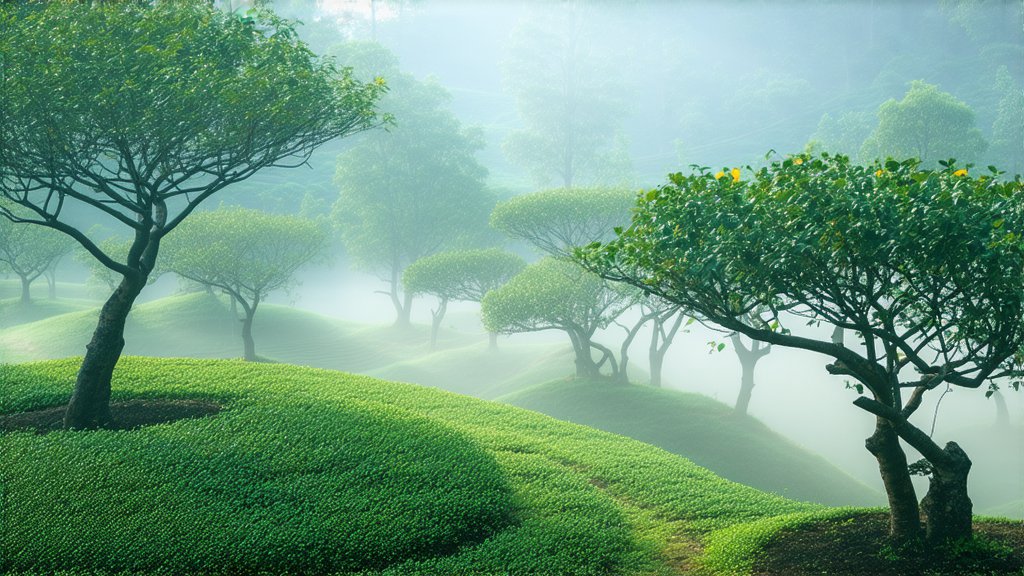
In the vast and diverse landscape of Chinese tea culture, where green, black, white, oolong, and pu-erh teas each boast their unique charm and historical significance, there exists a lesser-known gem that glimmers with a golden hue – the Junshan Yinzhen, a distinguished member of the yellow tea family. This article embarks on an exploration of this exquisite tea, delving into its storied past, the intricate artistry behind its production, and the nuanced ritual of its appreciation.
A Glimpse into History
The origins of Junshan Yinzhen can be traced back to the Tang Dynasty (618-907 AD), a period marked by flourishing arts, literature, and, notably, tea culture. Legend has it that the tea was discovered by chance when a batch of green tea leaves intended for imperial tribute was delayed in its drying process due to unfavorable weather conditions. The resulting transformation lent the leaves a distinctive yellow color and a unique flavor profile, which captivated the emperor and led to the creation of what we now know as yellow tea. Over centuries, Junshan Yinzhen has evolved, becoming synonymous with the very essence of Chinese tea craftsmanship.
Varieties within Yellow Tea
While Junshan Yinzhen stands as a pinnacle within the yellow tea category, it is essential to acknowledge the existence of other notable varieties such as Mooshan Yao Zhen and Houshuo Huang Ya. Each variety carries its own terroir-driven characteristics, shaped by specific climatic conditions, soil compositions, and traditional processing methods. However, Junshan Yinzhen, named after the Junshan Island in Hunan Province, distinguishes itself through its exceptional quality and the meticulous care taken in every step of its production.
The Art of Crafting Junshan Yinzhen
The journey from leaf to cup for Junshan Yinzhen is a testament to the skill and patience of tea artisans. The process begins with the careful selection of young, tender buds and leaves from tea plants cultivated on Junshan Island, renowned for its ideal growing conditions. These leaves are then subjected to a series of delicate operations:
-
Fixation: Unlike green tea, which is quickly fixed by high heat to retain its green color, Junshan Yinzhen undergoes a gentle steaming or pan-frying process that initiates enzymatic activity without completely halting it. This partial fixation imparts a subtle yellowish tint to the leaves.
-
Wrapping: Post-fixation, the leaves are wrapped in cloth or paper and left to undergo a controlled fermentation process known as "yellowing." During this phase, the remaining enzymes slowly break down the leaf tissues, further deepening the yellow hue and developing the tea's characteristic mellowness.
-
Drying: Finally, the leaves are carefully dried using low heat to preserve their delicate flavors and aromas, ensuring they retain their signature golden appearance.
Savoring the Golden Elixir
To truly appreciate Junshan Yinzhen, one must engage in the art of tea tasting, or "Gongfu Cha," which emphasizes mindfulness and reverence for the tea. Here's a guide to experiencing this elixir:
-
Preparation: Use water at an optimal temperature of around 80-85°C (176-185°F) to avoid scalding the delicate leaves. A glass teapot or a clear gaiwan allows for visual admiration of the tea's golden infusion.
-
Infusion: Place approximately 3 grams of loose leaves per 150ml of water. The first infusion serves as a rinse, awakening the leaves and discarded immediately. Subsequent infusions reveal the true depth and complexity of flavors.
-
Observation: Admire the transformation of the pale yellow liquor, noting its clarity and brightness. The aroma should be subtle yet alluring, with hints of floral sweetness and a whisper of earthiness.
-
Tasting: Sip slowly, allowing the tea to coat your palate. Junshan Yinzhen offers a harmonious balance between sweetness and slight astringency, with a lingering aftertaste that speaks of its refined character.
-
Appreciation: Each session with Junshan Yinzhen is an invitation to slow down, reflect, and connect with the ancient traditions that have shaped this remarkable beverage.
In conclusion, Junshan Yinzhen stands as a testament to the rich heritage and artistic prowess embedded within Chinese tea culture. Its history, meticulous production process, and the meditative act of its consumption offer not just a drink but an experience that transcends time and borders, inviting all who partake to savor a piece of history steeped in golden splendor.
Keywords: Junshan Yinzhen, yellow tea, Chinese tea culture, Huangcha, historical significance, tea processing techniques